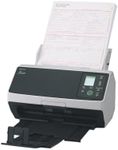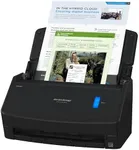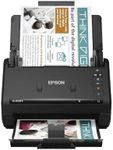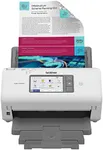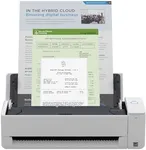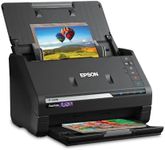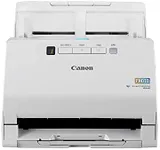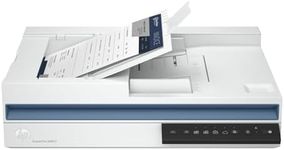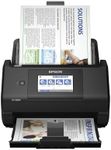Buying Guide for the Best Document Scanners
Choosing the right document scanner can make a big difference in how easily and efficiently you can digitize your paperwork, photos, or business documents. The best scanner for you depends on what you plan to scan, how often you’ll use it, and where you’ll use it. By understanding the key features and how they relate to your needs, you can confidently select a scanner that fits your workflow and helps you stay organized.Scan Resolution (DPI)Scan resolution, measured in DPI (dots per inch), determines how detailed and sharp your scanned images will be. Higher DPI means more detail, which is important for photos or documents with small text. For basic text documents, 200-300 DPI is usually enough. If you plan to scan photos or need to capture fine details, look for scanners that offer 600 DPI or higher. Think about what you’ll scan most often—if it’s mostly text, you don’t need the highest resolution, but for images or archival work, higher DPI is better.
Scan SpeedScan speed tells you how quickly a scanner can process pages, usually measured in pages per minute (ppm). Faster speeds are helpful if you have a lot of documents to scan regularly, such as in an office setting. For occasional home use, a slower scanner may be fine. If you expect to scan large batches, look for higher ppm ratings, but if you only scan a few pages at a time, speed is less critical.
Automatic Document Feeder (ADF)An Automatic Document Feeder (ADF) allows you to load a stack of papers and have them scanned automatically, rather than placing each page on the scanner glass by hand. This is a huge time-saver for multi-page documents. If you often scan contracts, reports, or multi-page files, an ADF is very useful. If you mostly scan single pages or photos, a flatbed scanner without an ADF may be sufficient.
Duplex ScanningDuplex scanning means the scanner can scan both sides of a page automatically in one pass. This is important if you often deal with double-sided documents, as it saves time and effort. If your documents are mostly single-sided, you may not need this feature, but for business or academic use where double-sided pages are common, duplex scanning is a great convenience.
Connectivity OptionsConnectivity refers to how the scanner connects to your computer or network. Common options include USB, Wi-Fi, and sometimes Ethernet. USB is simple and reliable for direct connections, while Wi-Fi allows for wireless scanning from multiple devices, which is handy in shared or mobile environments. Consider where and how you’ll use the scanner—if you want to scan from different devices or locations, wireless options are more flexible.
Supported Media Types and SizesDifferent scanners handle different types and sizes of documents, from standard letter-size paper to receipts, business cards, or even photos. Some scanners are designed for versatility, while others are optimized for specific tasks. Think about what you’ll scan most often—if you need to handle a variety of document types, look for a scanner with flexible media support.
Software FeaturesThe included software can make scanning easier and more productive, offering features like OCR (Optical Character Recognition) to turn scanned text into editable documents, automatic file organization, or direct cloud uploads. If you need to edit, search, or organize your scans, pay attention to the software capabilities. For simple archiving, basic software may be enough, but for more advanced needs, look for robust software support.
Size and PortabilityScanners come in various sizes, from compact portable models to larger desktop units. If you need to scan on the go or have limited space, a portable scanner is a good choice. For high-volume or office use, a larger desktop scanner may be more efficient. Consider where you’ll use the scanner and how often you’ll need to move it.
